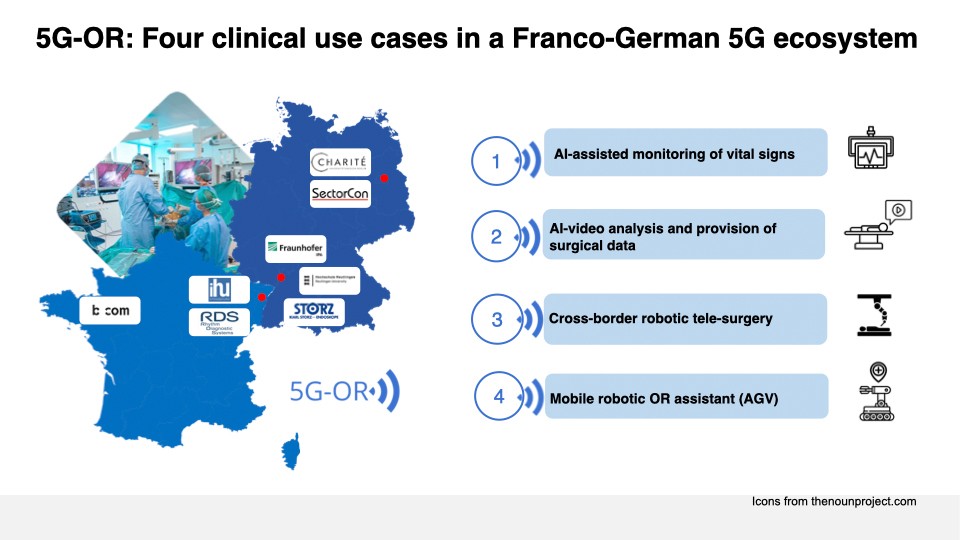Now digitization has also reached hospitals. The basis for entering the networked digital world in white is fast and secure data communication. A joint German-French project is now exploring the extent to which hospitals can benefit from their own network that operates according to the modern 5G mobile communications standard. It will be installed in operating rooms at three hospitals. The goals are ambitious: With the help of wireless technology, the basis for the clinic of the future is to be created, in which many procedures that today still require considerable personnel input will be digitally supported or automated.
Continuous analysis of vital patient parameters
Monitoring vital signs in patients is currently in focus because of the Corona pandemic. Clinical staff are confronted with a flood of acoustic and visual information that sometimes pushes them to their breaking point. In the clinic of the future, all of the patients’ vital data will converge wirelessly in a central computer, where it will be analyzed by artificial intelligence in real time. In this way, hospital staff in the operating room or intensive care unit will be able to determine where priority action is needed. In the future, 5G technology will make it possible to network a large number of mobile devices in a very small space at the same time and with minimal delays in communication via mobile communications.
AI-supported analysis of images and video data from the operating room
AI can also provide valuable assistance with diagnostic images or video sequences from the operating room, for example, during endoscopic surgery. AI evaluates the images and sounds the alarm if complications are imminent. Here, 5G can provide large bandwidths for the huge volumes of data. At the same time, many applications can also be calculated directly by edge computing, i.e. close to the patient instead of first having to be uploaded to the more distant cloud.
Telesurgery thanks to real-time data
Even tele-surgery is possible with the new technology, whereby the doctor can be located in a different city or even a different country than the patient. From a distance, he controls a robot and receives all the necessary data in real time. Thanks to integrated robotic sensors, he can even feel resistance, for example during a needle puncture. The 5G mode “Ultra Reliable and Low Latency Communications” is used for transmission. This mode offers low latency combined with high reliability, both of which are essential for tele-surgery.
Parts provisioning” in the operating room by robots
In a fourth project, a mobile robot is to provide all the necessary equipment, materials and instruments in the operating room to support hospital staff in a targeted manner. In modern factories, mobile systems of this kind have long been driving between the machines and providing the necessary supplies. However, operating rooms for such systems represent an environment with extreme requirements in terms of precision, safety, flexibility and reliability. 5G campus networks offer a promising solution to meet these requirements.
Operating rooms in Strasbourg, Mannheim and Berlin
The 5G-OR project started in January and will run for three years. It is one of four winning projects jointly selected by the Federal Ministry of Economy and Climate Protection in Germany and the Ministry of Economy, Finance and Reconstruction in France for the “Technical developments and application ecosystems for 5G private networks” call. Renowned companies and institutes are involved. For the German side, the Stuttgart-based Fraunhofer Institute for Manufacturing Engineering and Automation IPA is in charge. Operating rooms in Strasbourg and Mannheim as well as at the Charité in Berlin are ready for practical implementation.

















